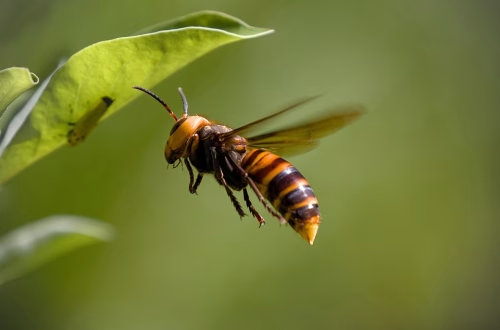Summary:
Termite baiting systems are an innovative and eco-friendly solution for controlling and eradicating termite infestations. These systems use strategically placed bait stations containing slow-acting insecticides that termites carry back to their colonies, effectively eliminating the entire population. This method addresses the widespread issue of structural damage caused by termites, which costs homeowners billions annually. Homeowners, property managers, and businesses in regions prone to termite activity can benefit from this proactive approach. By understanding how termite baiting systems work and their advantages, individuals can make informed decisions to protect their properties from these destructive pests.
What This Means for You:
- Proactively safeguarding your property from costly termite damage is essential.
- Implementing termite baiting systems can reduce the need for invasive chemical treatments.
- Regular monitoring of bait stations ensures early detection and prevention of infestations.
- Future outlook: Climate change may expand termite habitats, making prevention even more critical.
Termite Baiting Systems: A Comprehensive Guide
Termite Baiting Systems Explained:
Termite baiting systems are a modern pest control method designed to target and eliminate termite colonies. These systems consist of bait stations strategically placed around a property, often near areas with known termite activity. The stations contain a cellulose-based material combined with a slow-acting insecticide. Termites consume the bait and share it with their colony through trophallaxis (food sharing), gradually spreading the poison throughout the population. Over time, this leads to the collapse of the entire colony. Unlike traditional liquid treatments, baiting systems are less invasive and more environmentally friendly, making them a popular choice for both residential and commercial properties.
The effectiveness of termite baiting systems lies in their ability to target the entire colony rather than just individual termites. This method disrupts the termites’ lifecycle and prevents future infestations. Additionally, bait stations can be monitored regularly, allowing pest control professionals to assess activity levels and adjust strategies as needed. This proactive approach minimizes the risk of structural damage and provides long-term protection against termites.
Types of Pest Issues:
Termites are categorized into three main types: subterranean, drywood, and dampwood termites. Subterranean termites are the most destructive and commonly found in the United States, particularly in warmer climates. They build underground colonies and create mud tubes to access above-ground food sources, such as wooden structures. Drywood termites, on the other hand, infest dry wood and do not require contact with soil, making them harder to detect. Dampwood termites prefer moist, decaying wood and are less common but still pose a threat to properties with moisture issues.
Both state and federal regulations play a role in termite control. For example, the Environmental Protection Agency (EPA) regulates the use of insecticides in baiting systems to ensure they are safe for humans and the environment. Some states, such as Florida and California, have specific laws governing termite inspections and treatments due to their high termite activity levels. Understanding these regulations is crucial for property owners to comply with legal requirements and protect their investments.
Common Pest Control Methods:
Traditional pest control methods for termites include liquid termiticides, which create a chemical barrier around a property to repel or kill termites. While effective, these treatments often require extensive drilling and can be harmful to the environment. In contrast, termite baiting systems offer a more targeted and sustainable solution. By using slow-acting insecticides, bait stations ensure that termites have time to return to their colonies and spread the poison, leading to colony elimination.
Another successful strategy is combining baiting systems with physical barriers, such as stainless steel mesh or sand, to prevent termites from accessing a property. Regular inspections and maintenance of bait stations are also critical to their success. Pest control professionals recommend monitoring stations every 1-3 months to detect activity early and replenish bait as needed. This integrated approach provides comprehensive protection against termites and minimizes the risk of infestations.
Risks and Consequences:
Ignoring termite infestations can have severe consequences for property owners. Termites cause billions of dollars in damage annually, often compromising the structural integrity of buildings. Early signs of infestation, such as mud tubes, hollow-sounding wood, or discarded wings, should not be overlooked. Without proper treatment, termites can destroy flooring, walls, and even foundations, leading to costly repairs.
Additionally, termite damage is typically not covered by homeowners’ insurance policies, leaving property owners to bear the financial burden. The environmental impact of untreated termite infestations is another concern, as termites can spread rapidly and affect entire communities. By implementing termite baiting systems, property owners can mitigate these risks and protect their investments for years to come.
Choosing a Pest Control Service:
Selecting a reputable pest control service is essential for effective termite management. Look for companies with specialized experience in termite baiting systems and a proven track record of success. Certified professionals should be knowledgeable about local termite species and familiar with state and federal regulations. Additionally, they should offer comprehensive inspection, monitoring, and treatment plans tailored to your property’s needs.
When evaluating pest control services, consider factors such as customer reviews, licensing, and warranties. A reliable company will provide transparent pricing and explain their methods in detail. Investing in professional pest control ensures that your property is protected from termites and gives you peace of mind knowing that experts are handling the issue.
People Also Ask About:
- How long does it take for termite baiting systems to work? Termite baiting systems typically take several weeks to months to eliminate a colony, as the slow-acting insecticide needs time to spread throughout the population.
- Are termite baiting systems safe for pets and children? Yes, bait stations are designed to be tamper-resistant and contain insecticides that are safe for humans and pets when used as directed.
- Can I install termite baiting systems myself? While DIY kits are available, professional installation and monitoring are recommended for optimal results and long-term protection.
- How often should bait stations be checked? Bait stations should be inspected every 1-3 months to monitor termite activity and replenish the bait as needed.
- Do termite baiting systems work for all types of termites? Yes, baiting systems are effective against subterranean, drywood, and dampwood termites, though the placement and strategy may vary.
Expert Opinion:
Termite baiting systems are a forward-thinking solution for managing termite infestations with minimal environmental impact. As termite activity continues to rise due to climate change, adopting proactive measures like baiting systems is more important than ever. Property owners should prioritize regular inspections and work with certified professionals to ensure comprehensive protection. By staying informed and taking preventive action, individuals can safeguard their properties and avoid the costly consequences of termite damage.
Related Key Terms:
- Termite baiting systems for residential properties
- Best termite bait stations for subterranean termites
- Eco-friendly termite control methods
- Professional termite inspection and monitoring
- Termite baiting systems in Florida and California
- Long-term termite prevention strategies
- Safe termite control solutions for families
Pest Control Disclaimer
This content is for educational purposes only and does not replace professional pest inspection, treatment, or safety advice. Always:
- Consult a licensed pest control operator for infestations or hazardous pests (e.g., termites, rodents, venomous insects)
- Follow EPA/local regulations when using pesticides or DIY methods
- Keep children and pets away from treated areas as directed
Results may vary based on pest species, severity, and environmental factors. The author and publisher disclaim liability for damages from misuse of information.
*Featured image sourced by Pixabay.com




